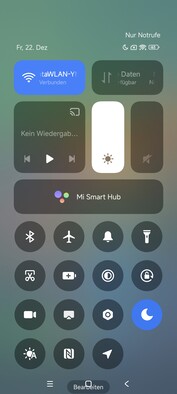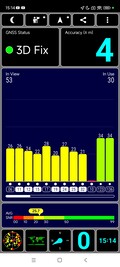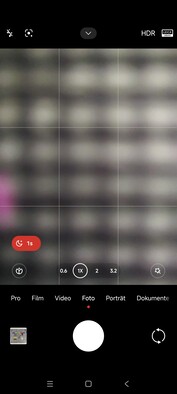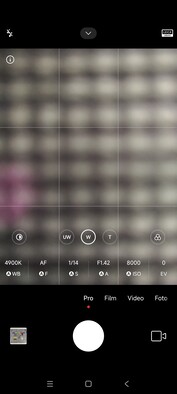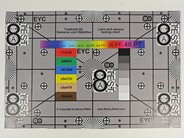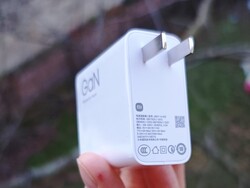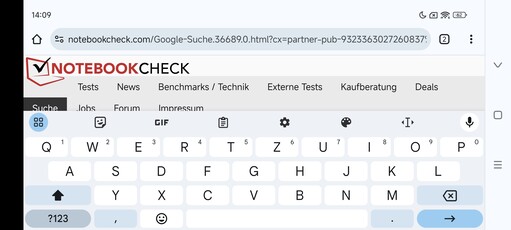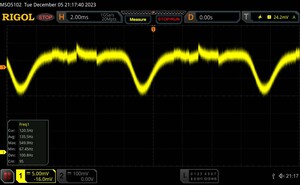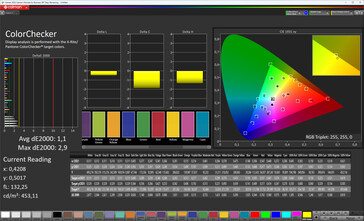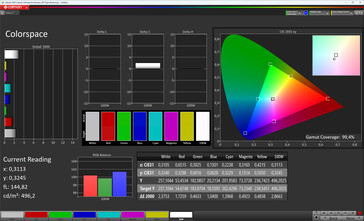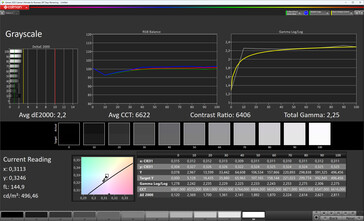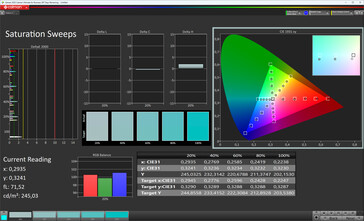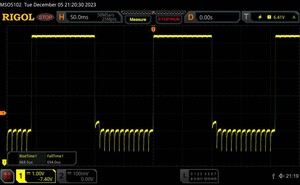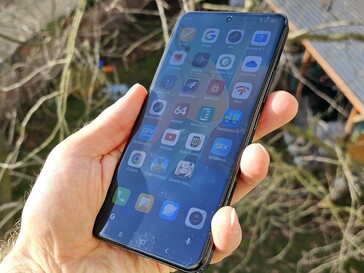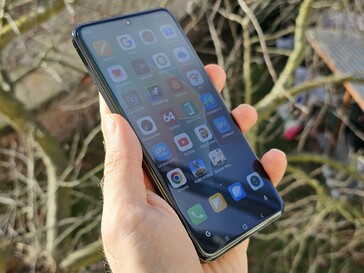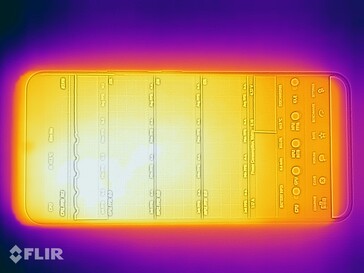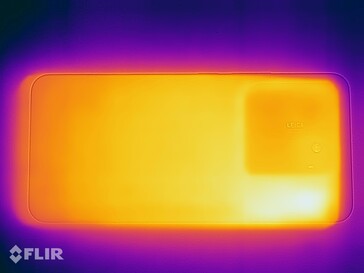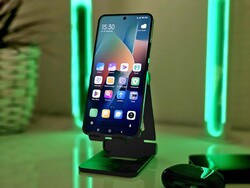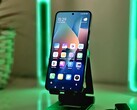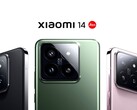Xiaomi 14 Pro review - Leica camera smartphone with a great display leaves some questions
Not only does the Xiaomi 14 Pro use the currently best SoC in an Android smartphone with the Qualcomm Snapdragon 8 Gen 3, but it also offers some interesting changes in the camera system compared to the 13 Pro. The Sony IMX989 in the 1-inch format is replaced by a new, significantly smaller image sensor called "Light Hunter 900" in the 1/1.31 inch format - probably from Omnivision. The lens of the 50-MP main camera uses a variable aperture, allowing you to use an aperture up to f/4.0 giving more depth to the depicted objects. In contrast to that of the Xiaomi 13 Ultra, the aperture of the 14 Pro can now be opened in several steps.
The Xiaomi 14 Pro is currently only available in China, and it is still unclear whether a global version for the European market will follow. The import prices start from 790 Euros (~$839) for the base version with 12 GB RAM and 256 GB flash storage. The top model in the Titanium Special Edition with 16 GB of RAM and 1 TB storage costs around 960 Euros (~$1,060).
Possible Competitors in Comparison
Rating | Date | Model | Weight | Drive | Size | Resolution | Price |
|---|---|---|---|---|---|---|---|
| 89.4 % v7 (old) | 12 / 2023 | Xiaomi 14 Pro SD 8 Gen 3, Adreno 750 | 223 g | 256 GB UFS 4.0 Flash | 6.73" | 3200x1440 | |
| 90.3 % v7 (old) | 03 / 2023 | Samsung Galaxy S23+ SD 8 Gen 2 for Galaxy, Adreno 740 | 195 g | 256 GB UFS 4.0 Flash | 6.60" | 2340x1080 | |
| 89 % v7 (old) | 12 / 2023 | Google Pixel 8 Pro Tensor G3, Mali-G715 MP7 | 213 g | 128 GB UFS 3.1 Flash | 6.70" | 2992x1344 | |
| 89 % v7 (old) | 09 / 2023 | Sony Xperia 5 V SD 8 Gen 2, Adreno 740 | 182 g | 128 GB UFS 3.1 Flash | 6.10" | 2520x1080 | |
| 89.2 % v7 (old) | 03 / 2023 | Xiaomi 13 Pro SD 8 Gen 2, Adreno 740 | 229 g | 256 GB UFS 4.0 Flash | 6.73" | 3200x1440 |
Case - Xiaomi smartphone with IP certification
One of the most interesting changes of the Xiaomi 14 Pro compared to the predecessor concerns the protective glass that is used. Xiaomi foregoes Gorilla Glas from Corning and chooses its own in-house material instead. The protective glass called Xiaomi Ceramic Glass is supposed to provide a particularly high protection from falls. According to the manufacturer, it offers a 20% higher protection against breaking than the Ceramic Shield of the Apple iPhone 15 Pro. In terms of protection, the current flagship from the Chinese manufacturer also offers a water and dustproof case with an IP68 certification.
The case is available in three matte colors as well as a matte Titanium Special Edition with a Titanium frame. The quality of the workmanship is at a very high level in the 14 Pro. The form factor of the Xiaomi smartphone is almost identical to that of the 13 Pro, but the manufacturer was able to slightly improve the display-to-surface ratio by using slightly slimmer bezels around the OLED panel.
The display of the Xiaomi 14 Pro now offers an "all around liquid" design. This means that the panel is rounded on all four corners and edges, bending downward with even curves, which feels very ergonomic when using swiping gestures.
Equipment - Xiaomi 14 Pro with USB 3.2
The current flagship from the Chinese manufacturer offers very good equipment overall with Bluetooth 5.4, Miracast, and NFC, even though it still isn't the best of the best for the 14 Pro, since there is no IR blaster or ultrawide-band chip.
In contrast to the predecessor, the Xiaomi 14 Pro now finally includes a fast USB connection that according to the specs, runs at USB 3.2 (Gen. 2) speeds and supports USB OTG and wired display output. However, in our copy test using a connected M2.SSD drive (Samsung 980 Pro), the transfer speed of the USB port, which should really be very fast, is at a slow 311 MB/s. There is neither an optional storage expansion, nor an audio port.
Software - Xiaomi smartphone with Android 14
The Xiaomi HyperOS kernel, which is a hybrid of Linux and the Vela system that was developed in-house, is used for the first time in a smartphone. Those who had hoped to get a completely new operating system based on Android with HyperOS might be disappointed, seeing the many similarities in the visuals and menu structures compared to the MIUI user interface. However, in everyday operation HyperOS is still a very well-optimized user interface with a refreshed look of the earlier MIUI – but a new start in software looks different, even if there are several optimizations and implementations under the hood, such as the security and data privacy protections.
Xiaomi plans to provide its 14 Pro with four years of software updates, and there are even supposed to be security patches for a year longer - although it is unknown how many updates there will be every quarter. During the time of our testing, the operating system is based on Android 14 and the security patch level of November 2023.
Our test unit on loan from Trading Shenzhen already has the new Xiaomi.eu surface preinstalled, including access to the Play Store and the German language. However, as it comes from the manufacturer, the Chinese version supports neither Google applications nor an extensive selection of languages. So users need to install the apk files themselves here and be content with the English language.
Communication and GNSS - Xiaomi 14 Pro with WiFi 7
While connected to the WLAN at home, the Xiaomi smartphone offers the best of the best with the current WiFi 7 standard. Using our Asus ROG Rapture GT-AXE11000 reference router, the test unit not only shows very high but also relatively constant transfer rates, and we measure almost 1,900 Mbit/s at the top.
In addition to the fast WLAN, the Xiaomi 14 Pro uses the 5G standard, although it only offers 16 LTE bands. The Chinese version generally only offers a reduced frequency band coverage, without supporting access to the LTE Band 20. Those who need more 4G frequencies or quad GSM have to wait for a global version.
| Networking | |
| Xiaomi 14 Pro | |
| iperf3 receive AXE11000 | |
| iperf3 transmit AXE11000 | |
| iperf3 transmit AXE11000 6GHz | |
| iperf3 receive AXE11000 6GHz | |
| Samsung Galaxy S23+ | |
| iperf3 receive AXE11000 | |
| iperf3 transmit AXE11000 | |
| iperf3 transmit AXE11000 6GHz | |
| iperf3 receive AXE11000 6GHz | |
| Google Pixel 8 Pro | |
| iperf3 receive AXE11000 | |
| iperf3 transmit AXE11000 | |
| iperf3 transmit AXE11000 6GHz | |
| iperf3 receive AXE11000 6GHz | |
| Sony Xperia 5 V | |
| iperf3 receive AXE11000 | |
| iperf3 transmit AXE11000 | |
| Xiaomi 13 Pro | |
| iperf3 receive AXE11000 | |
| iperf3 transmit AXE11000 | |
| iperf3 transmit AXE11000 6GHz | |
| iperf3 receive AXE11000 6GHz | |
| Average of class Smartphone | |
| iperf3 receive AXE11000 | |
| iperf3 transmit AXE11000 | |
| iperf3 transmit AXE11000 6GHz | |
| iperf3 receive AXE11000 6GHz | |
The 14 Pro doesn't always determine its location perfectly, and we notice some small deviations from the actual route particularly in curves. We use a Garmin Venu 2 for comparison, but the results it delivers are very similar to those of the Xiaomi smartphone.
To determine its location, the Xiaomi 14 Pro uses the main satellite systems, most of the time in dual-band. In our test, these are Beidou (B1(C), B2a), GPS (L1, L5), Galileo (E1, E5a), and GLONASS (L1). Even indoors, the locating succeeds very quickly and with an accuracy of about 3 meters (10 ft).
Telephone Functions and Voice Quality - Xiaomi smartphone with dual-SIM
The Xiaomi 14 Pro offers full dual-SIM capabilities with two nano-SIM card slots in the 5G net. We don't find an option to integrate an eSIM into the system in the system settings of the Chinese version. Since the T series offers an eSIM functionality at this point, we wouldn't be surprised, if a global version would also support this feature.
The three built-in microphones produce a very attractive voice experience, although it is slightly marred by some smaller annoying noises. Using the earpiece, the voice quality is very clear, but it could still be slightly louder.
Cameras - Xiaomi smartphone with OIS
Compared to the predecessor, the resolution of the 32-MP selfie camera has remained unchanged, but the high-end smartphone now finally supports 4K videos at 60 fps. The quality of the pictures has also improved visibly, even if the 14 Pro still isn't a selfie expert.
In the comparison with the Xiaomi 13 Pro, the new Leica Summilux lens with a resolution of 50 Megapixel (23 mm focal length) and sensor in the 1/1.31-inch format offers a significantly higher light sensitivity of f/1.42 instead of f/1.9. This is supposed to allow the camera to take brighter and less noisy pictures under low-light conditions. However, the size of the sensor is also significantly smaller. Another new change is a variable control of the aperture from f/1.42 to f/4.0 in four steps.
Using 4-in-1 pixel binning, the 50-MP main camera takes pictures in 12.5-MP resolution and also offers optical image stabilization. While pictures taken in daylight can show a good image sharpness and very high recording speed, some details are lost due to the low dynamic. In addition, objects in the edge areas also appear slightly blurry. Under low-light conditions, the sensor gives justice to its name, delivering very bright pictures with the large open aperture. However, we still would have wished for a higher level of sharpness. Since devices from other manufacturers, such as the Galaxy S23 Ultra from Samsung, also always perform less than optimally right after their introduction into the market, it remains to see whether Xiaomi will still optimize its new sensor.
The 50-MP ultrawide angle lens with a focal length of 14 mm (~0.44 in) produces a solid image quality for this price class, but the images show less details than those from the competitors, and the basic sharpness could also turn out better. The focus works up to a minimum distance of 5 cm (~2.1 in) for super macro recordings. Other manufacturers offer an even closer distance to the object with 3 cm (~1.2 in) here.
The third 50-MP lens has a focal length of 75 mm (~3 in) and offers optical image stabilization. With its lossless zoom (3.2x) it takes convincing pictures, and images are attractive even up to a zoom level of 10x. With the in-house Liquid Lens design, the tele lens also offers a macro function. The "swimming" lens group is split into two groups that can be moved internally, allowing for a focal range from 10 cm (~4 in) up to a theoretical maximum of infinite length.
In terms of videos, the high-end smartphone delivers good stabilization and supports a high dynamic range (HDR 10+/Dolby Vision). Videos can be recorded in UHD quality at a maximum of 60 fps and if you like, you can also record 30 frames per second in 8K resolution. An additional Pro mode for videos has also been implemented.
Image comparison
Choose a scene and navigate within the first image. One click changes the position on touchscreens. One click on the zoomed-in image opens the original in a new window. The first image shows the scaled photograph of the test device.
HauptkameraHauptkameraLow LightUltraweitwinkelZoom 5xUnder controlled light conditions, the Xiaomi smartphone shows a decent color reproduction in our measurements. Particularly green color tones are reproduced brighter and with more intense color than the reference colors (using the AI function activated by default), causing the DeltaE deviations to end up at fairly high level.
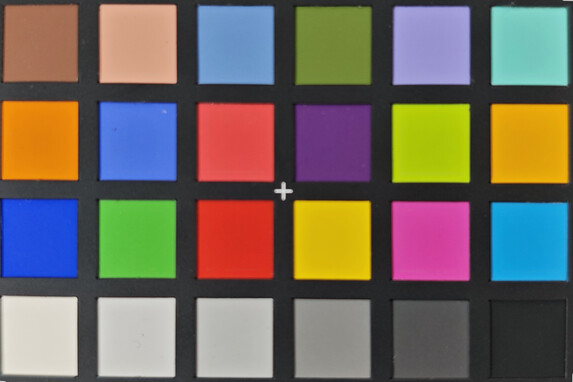
Accessories and Warranty - Xiaomi 14 Pro with included charger
The box includes a modular 120-Watt charger, a cable for data and charging, a protective cover, a SIM tool, and a quick-start manual. There is also a protective screen cover already applied in the state of delivery. In addition, TradingShenzhen who provided us with the smartphone for testing, also added an EU adapter for the charger and a USB OTG adapter with our Chinese version.
The Chinese version of the 14 Pro includes a warranty of 12 months. In case of a warranty situation, our import device from TradingShenzhen includes the option to send the smartphone to a German address for repair.
Input Devices and Operation - Xiaomi smartphone with optical fingerprint sensor
Inputs on the 6.73-inch OLED display are implemented accurately up to the corners of the touchscreen. With a scan-rate of 240 Hz, the LTPO panel responds to touch inputs with a high degree of sensitivity, but is actualized up to 2,160 times per second, which ensures a very low latency for inputs, mainly while gaming. In addition, it uses a high-quality vibration motor that delivers a precise and crisp haptic feedback in everyday operation.
The optical fingerprint sensor is integrated in the display and always unlocks the Xiaomi 14 Pro quickly and reliably. A fairly insecure 2D face recognition, which is based on a FaceUnlock function using the front camera, is also available.
Display - Xiaomi 14 Pro with OLED

The built-in 2K AMOLED Super Visual Sense display reaches a WQHD+ resolution with a very high pixel density of 522 ppi. The system itself reports a very low minimal frequency of 10 Hz for the dynamic 120-Hz display, while the manufacturer specifies 1 Hz.
The panel uses the C8 illumination material developed together by Xiaomi and CSOT (TCL company), which is supposed to offer the highest amount of brightness in the industry. During the reproduction of a 4K HDR pattern video, we almost reach the advertised maximum brightness of 3,000 nits with an actual value of 2.882 cd/m².
The maximum brightness with a pure white display content and activated brightness sensor lies at 1,076 cd/m², but with an even distribution of bright and dark areas (APL18), the display of the 14 Pro gets even brighter at 1,432 cd/m² in our test.
| |||||||||||||||||||||||||
Brightness Distribution: 95 %
Center on Battery: 1025 cd/m²
Contrast: ∞:1 (Black: 0 cd/m²)
ΔE ColorChecker Calman: 1.1 | ∀{0.5-29.43 Ø4.77}
ΔE Greyscale Calman: 2.2 | ∀{0.09-98 Ø5}
99.4% sRGB (Calman 2D)
Gamma: 2.25
CCT: 6622 K
| Xiaomi 14 Pro AMOLED, 3200x1440, 6.7" | Samsung Galaxy S23+ Dynamic AMOLED 2x, 2340x1080, 6.6" | Google Pixel 8 Pro OLED, 2992x1344, 6.7" | Sony Xperia 5 V OLED, 2520x1080, 6.1" | Xiaomi 13 Pro OLED, 3200x1440, 6.7" | |
|---|---|---|---|---|---|
| Screen | -33% | 13% | -9% | 11% | |
| Brightness middle (cd/m²) | 1025 | 1128 10% | 1510 47% | 889 -13% | 1230 20% |
| Brightness (cd/m²) | 1046 | 1136 9% | 1467 40% | 898 -14% | 1244 19% |
| Brightness Distribution (%) | 95 | 99 4% | 92 -3% | 97 2% | 94 -1% |
| Black Level * (cd/m²) | |||||
| Colorchecker dE 2000 * | 1.1 | 2.7 -145% | 1.1 -0% | 1.4 -27% | 1 9% |
| Colorchecker dE 2000 max. * | 2.9 | 4.5 -55% | 3.8 -31% | 4.5 -55% | 2.8 3% |
| Greyscale dE 2000 * | 2.2 | 2.6 -18% | 1.7 23% | 1 55% | 1.8 18% |
| Gamma | 2.25 98% | 2.05 107% | 2.23 99% | 2.23 99% | 2.24 98% |
| CCT | 6622 98% | 6644 98% | 6670 97% | 6456 101% | 6446 101% |
* ... smaller is better
Due to the OLED technology, Xiaomi uses pulse-width modulation with its corresponding display flickering to control the display brightness. In our measurements with the oscilloscope, the amplitude remains very even across the whole range of brightness and also very constant at 120 Hz. However, the manufacturer speaks about a very high frequency of 1,920 Hz here, which would be much more comfortable for sensitive users. To find out more about this, we additionally examine the Xiaomi 14 Pro with a flicker meter that recognizes visible variations in the illumination density. Using our measurement of 1,933 Hz, we are also able to confirm the specifications of the manufacturer.
Screen Flickering / PWM (Pulse-Width Modulation)
| Screen flickering / PWM detected | 120.5 Hz | ||
The display backlight flickers at 120.5 Hz (worst case, e.g., utilizing PWM) . The frequency of 120.5 Hz is very low, so the flickering may cause eyestrain and headaches after extended use. In comparison: 53 % of all tested devices do not use PWM to dim the display. If PWM was detected, an average of 8084 (minimum: 5 - maximum: 343500) Hz was measured. | |||
Measurement series at fixed zoom level and various display brightness settings
We examine the color calibration of the Dolby Vision, HDR10+, and HGL certified AMOLED panel (12 bit) with the Calman analysis software and a photo spectrometer. The deviations in the colors and grayscale remain within the target range (<3), and the measured DeltaE values are very low.
In terms of adjustment options, the HyperOS interface turns out exemplary. In addition to three color profiles, users are able to adjust the individual parameters such as the color space (sRGB, P3), the saturation, and gamma values in the extended settings.
Display Response Times
| ↔ Response Time Black to White | ||
|---|---|---|
| 1.5 ms ... rise ↗ and fall ↘ combined | ↗ 0.766 ms rise | |
| ↘ 0.736 ms fall | ||
| The screen shows very fast response rates in our tests and should be very well suited for fast-paced gaming. In comparison, all tested devices range from 0.1 (minimum) to 240 (maximum) ms. » 8 % of all devices are better. This means that the measured response time is better than the average of all tested devices (20.2 ms). | ||
| ↔ Response Time 50% Grey to 80% Grey | ||
| 1.36 ms ... rise ↗ and fall ↘ combined | ↗ 0.6685 ms rise | |
| ↘ 0.694 ms fall | ||
| The screen shows very fast response rates in our tests and should be very well suited for fast-paced gaming. In comparison, all tested devices range from 0.165 (minimum) to 636 (maximum) ms. » 5 % of all devices are better. This means that the measured response time is better than the average of all tested devices (31.6 ms). | ||
Outdoors, the Xiaomi smartphone leaves a great impression, offering sufficient brightness reserves to be able to handle the winter light. Considering the high brightness, reflections in summer should also hardly be able to become a hinderance in reading the contents of the AMOLED panel. However, you should also consider that the maximum brightness without the brightness sensor is only 503 cd/m².
Performance - Xiaomi smartphone with Snapdragon SoC
The Snapdragon 8 Gen 3 used in the Xiaomi 14 Pro is the high-end SoC of 2024 from the American manufacturer. In our benchmarks, the Xiaomi smartphone with 12 GB of DDR5x RAM and fast 256-GB UFS 4.0 storage delivers a very high performance level. Particularly in the multi-core evaluation of Geekbench, the Qualcomm chip set shows a decent improvement compared to a Snapdragon 8 Gen 2 or Apple A17 Pro.
On the other hand, the single-core CPU performance turns out lower than that of the iPhone 15 Pro. Considering the higher clock-speed of the Apple A17 P core (3.8 GHz), we expected this. Here, the Prime core (Cortex X4, 3.3 GHz) only shows a slight improvement compared to the predecessor. Although the 14 Pro does well in the system benchmarks (PCMark, CrossMark), it still places behind the Sony Xperia 5 V with its Snapdragon 8 Gen 2.
| UL Procyon AI Inference for Android - Overall Score NNAPI | |
| Google Pixel 8 Pro | |
| Average of class Smartphone (3769 - 81594, n=134, last 2 years) | |
| Xiaomi 14 Pro | |
| Samsung Galaxy S23+ | |
| Sony Xperia 5 V | |
| Average Qualcomm Snapdragon 8 Gen 3 (11487 - 18370, n=22) | |
| Xiaomi 13 Pro | |
In the graphics tests of GFXBench, the Xiaomi 14 Pro with the Adreno 750 places ahead of the Samsung Galaxy S23 Plus and the Xiaomi 13 Pro as expected – but only without any load scenarios ahead of the test. If we keep running GFXBench uninterruptedly, the results turn out significantly lower at times, which is due to a temporary performance reduction because of the high heat development.
GFXBench 3.0: on screen Manhattan Onscreen OGL | 1920x1080 1080p Manhattan Offscreen
GFXBench 3.1: on screen Manhattan ES 3.1 Onscreen | 1920x1080 Manhattan ES 3.1 Offscreen
GFXBench: on screen Car Chase Onscreen | 1920x1080 Car Chase Offscreen | on screen Aztec Ruins High Tier Onscreen | 2560x1440 Aztec Ruins High Tier Offscreen | on screen Aztec Ruins Normal Tier Onscreen | 1920x1080 Aztec Ruins Normal Tier Offscreen | 3840x2160 4K Aztec Ruins High Tier Offscreen
| GFXBench (DX / GLBenchmark) 2.7 / T-Rex Onscreen | |
| Xiaomi 13 Pro | |
| Samsung Galaxy S23+ | |
| Sony Xperia 5 V | |
| Google Pixel 8 Pro | |
| Xiaomi 14 Pro | |
| GFXBench (DX / GLBenchmark) 2.7 / T-Rex Offscreen | |
| Xiaomi 14 Pro | |
| Xiaomi 13 Pro | |
| Samsung Galaxy S23+ | |
| Sony Xperia 5 V | |
| Google Pixel 8 Pro | |
| GFXBench 3.0 / Manhattan Onscreen OGL | |
| Xiaomi 13 Pro | |
| Samsung Galaxy S23+ | |
| Sony Xperia 5 V | |
| Google Pixel 8 Pro | |
| Xiaomi 14 Pro | |
| GFXBench 3.0 / 1080p Manhattan Offscreen | |
| Xiaomi 14 Pro | |
| Xiaomi 13 Pro | |
| Sony Xperia 5 V | |
| Samsung Galaxy S23+ | |
| Google Pixel 8 Pro | |
| GFXBench 3.1 / Manhattan ES 3.1 Onscreen | |
| Samsung Galaxy S23+ | |
| Sony Xperia 5 V | |
| Xiaomi 14 Pro | |
| Google Pixel 8 Pro | |
| Xiaomi 13 Pro | |
| GFXBench 3.1 / Manhattan ES 3.1 Offscreen | |
| Xiaomi 14 Pro | |
| Xiaomi 13 Pro | |
| Samsung Galaxy S23+ | |
| Sony Xperia 5 V | |
| Google Pixel 8 Pro | |
| GFXBench / Car Chase Onscreen | |
| Samsung Galaxy S23+ | |
| Sony Xperia 5 V | |
| Xiaomi 14 Pro | |
| Google Pixel 8 Pro | |
| Xiaomi 13 Pro | |
| GFXBench / Car Chase Offscreen | |
| Xiaomi 14 Pro | |
| Samsung Galaxy S23+ | |
| Xiaomi 13 Pro | |
| Sony Xperia 5 V | |
| Google Pixel 8 Pro | |
| GFXBench / Aztec Ruins High Tier Onscreen | |
| Samsung Galaxy S23+ | |
| Sony Xperia 5 V | |
| Xiaomi 14 Pro | |
| Google Pixel 8 Pro | |
| Xiaomi 13 Pro | |
| GFXBench / Aztec Ruins High Tier Offscreen | |
| Xiaomi 14 Pro | |
| Samsung Galaxy S23+ | |
| Xiaomi 13 Pro | |
| Sony Xperia 5 V | |
| Google Pixel 8 Pro | |
| GFXBench / Aztec Ruins Normal Tier Onscreen | |
| Samsung Galaxy S23+ | |
| Sony Xperia 5 V | |
| Xiaomi 14 Pro | |
| Google Pixel 8 Pro | |
| Xiaomi 13 Pro | |
| GFXBench / Aztec Ruins Normal Tier Offscreen | |
| Xiaomi 14 Pro | |
| Samsung Galaxy S23+ | |
| Xiaomi 13 Pro | |
| Sony Xperia 5 V | |
| Google Pixel 8 Pro | |
| GFXBench / 4K Aztec Ruins High Tier Offscreen | |
| Xiaomi 14 Pro | |
| Samsung Galaxy S23+ | |
| Sony Xperia 5 V | |
| Xiaomi 13 Pro | |
| Google Pixel 8 Pro | |
The browser performance of the Xiaomi smartphone is very good, and surfing doesn't pose any problems to the 14 Pro. In our benchmark package, the Leica smartphone achieves top values at times, although it places more in the middle of the field overall.
| Jetstream 2 - 2.0 Total Score | |
| Sony Xperia 5 V (Chrome 117.0.5938.60) | |
| Samsung Galaxy S23+ (Chrome 110.0.5481.65) | |
| Xiaomi 14 Pro (Chrome 120) | |
| Average of class Smartphone (23.8 - 387, n=148, last 2 years) | |
| Average Qualcomm Snapdragon 8 Gen 3 (64.1 - 241, n=24) | |
| Xiaomi 13 Pro (Chrome 109) | |
| Google Pixel 8 Pro (Chrome 117) | |
| Speedometer 2.0 - Result 2.0 | |
| Average of class Smartphone (15.2 - 643, n=121, last 2 years) | |
| Average Qualcomm Snapdragon 8 Gen 3 (69.6 - 311, n=19) | |
| Sony Xperia 5 V (Chrome 117.0.5938.60) | |
| Google Pixel 8 Pro (Chrome 117) | |
| Samsung Galaxy S23+ (Chrome 110.0.5481.65) | |
| Xiaomi 14 Pro (Chrome 120) | |
| Xiaomi 13 Pro (Chrome 109) | |
| WebXPRT 4 - Overall | |
| Xiaomi 14 Pro (Chrome 120) | |
| Sony Xperia 5 V (Chrome 117.0.5938.60) | |
| Average Qualcomm Snapdragon 8 Gen 3 (69 - 212, n=22) | |
| Xiaomi 13 Pro (Chrome 109) | |
| Samsung Galaxy S23+ (Chrome 110.0.5481.65) | |
| Average of class Smartphone (27 - 306, n=145, last 2 years) | |
| Google Pixel 8 Pro (Chrome 117) | |
| WebXPRT 3 - Overall | |
| Sony Xperia 5 V (Chrome 117.0.5938.60) | |
| Average Qualcomm Snapdragon 8 Gen 3 (142 - 310, n=9) | |
| Xiaomi 14 Pro (Chrome 120) | |
| Average of class Smartphone (38 - 380, n=31, last 2 years) | |
| Google Pixel 8 Pro (Chrome 117) | |
| Octane V2 - Total Score | |
| Sony Xperia 5 V (Chrome 117.0.5938.60) | |
| Samsung Galaxy S23+ (Chrome 110.0.5481.65) | |
| Xiaomi 14 Pro (Chrome 120) | |
| Average Qualcomm Snapdragon 8 Gen 3 (25953 - 75238, n=27) | |
| Average of class Smartphone (2228 - 126661, n=196, last 2 years) | |
| Google Pixel 8 Pro (Chrome 117) | |
| Xiaomi 13 Pro (Chrome 109) | |
| Mozilla Kraken 1.1 - Total | |
| Average of class Smartphone (257 - 28190, n=156, last 2 years) | |
| Google Pixel 8 Pro (Chrome 117) | |
| Xiaomi 14 Pro (Chrome 120) | |
| Average Qualcomm Snapdragon 8 Gen 3 (510 - 2066, n=25) | |
| Sony Xperia 5 V (Chrome 117.0.5938.60) | |
| Samsung Galaxy S23+ (Chrome 110.0.5481.65) | |
| Xiaomi 13 Pro (Chrome 109) | |
* ... smaller is better
| Xiaomi 14 Pro Adreno 750, SD 8 Gen 3, 256 GB UFS 4.0 Flash | Xiaomi 13 Pro Adreno 740, SD 8 Gen 2, 256 GB UFS 4.0 Flash | |
|---|---|---|
| PCMark for Android | 90% | |
| Storage 2.0 random write int. (MB/s) | 28 | 84.97 203% |
| Storage 2.0 seq. write int. (MB/s) | 2300 | 2299.5 0% |
| Storage 2.0 random read int. (MB/s) | 20.9 | 45.22 116% |
| Storage 2.0 seq. read int. (MB/s) | 2075 | 2926.49 41% |
Games - Xiaomi smartphone reaches 100 fps or higher
Using the GameBench app, we take a closer look at how smoothly games from the Play Store are able to run and whether HFR gaming is possible with the Xiaomi 14 Pro. While the latter works in our test, it can only be achieved with older games such as Dead Trigger 2.
In PUBG mobile, the usual 60 fps can be achieved constantly with medium details (HD Mode), and when we increase the graphic details in the test (UHD), the graphics unit still reaches an even 40 frames per second. The recently introduced 90-fps option isn't displayed, which is probably due to Android 14 and a lack of configuration of the app. The very demanding Genshin Impact fantasy action role game is reproduced at a maximum of 60 fps.
Emissions - Xiaomi 14 Pro with high heat development
Temperatures
During the market introduction of the Xiaomi 14 Pro, Xiaomi emphasized that its cooling system is significantly more efficient than that of an iPhone 15 Pro Max, allowing it to achieve a higher performance under constant load. We are unable to examine the behavior of the Snapdragon 8 Gen 3 with the stress test of 3DMark in terms of thermal throttling of the performance, since installation was not possible during our testing period. But the benchmark results of GFXBench (see above) at least indicate some inconsistent performance capabilities at times.
The surface temperatures turn out fairly high in our measurements, particularly considering that the Burnout Benchmark terminates under full load of both CPU and GPU due to overheating. This also means that our measurement of the heat development is determined only under easier conditions (CPU).
(±) The maximum temperature on the upper side is 44.6 °C / 112 F, compared to the average of 35.2 °C / 95 F, ranging from 21.9 to 247 °C for the class Smartphone.
(±) The bottom heats up to a maximum of 44.2 °C / 112 F, compared to the average of 34 °C / 93 F
(+) In idle usage, the average temperature for the upper side is 26.6 °C / 80 F, compared to the device average of 32.9 °C / 91 F.
3DMark Wild Life Stress Test
| 3DMark | |
| Wild Life Stress Test Stability | |
| Xiaomi 13 Pro | |
| Google Pixel 8 Pro | |
| Samsung Galaxy S23+ | |
| Sony Xperia 5 V | |
| Wild Life Extreme Stress Test | |
| Xiaomi 13 Pro | |
| Google Pixel 8 Pro | |
| Samsung Galaxy S23+ | |
| Sony Xperia 5 V | |
Speakers
The Xiaomi 14 Pro uses a dual-speaker system with a loud sound level. We measure a maximum volume of more than 90 dB. The Xiaomi smartphone is unable to deliver bass frequencies with some presence, although we do perceive a slight touch of bass. Our Pink Noise measurements show a slightly rising frequency curve for the mids.
Those who want to use external sound output can use USB for wired or Bluetooth 5.4 for wireless connections. The latter supports the SBC, AAC, aptX, aptX HD, aptX Adaptive, aptX TWS+, LDAC, and LHDC V5 codecs. LC3 and aptX Lossless are not supported.
Xiaomi 14 Pro audio analysis
(+) | speakers can play relatively loud (90.5 dB)
Bass 100 - 315 Hz
(-) | nearly no bass - on average 21.5% lower than median
(±) | linearity of bass is average (7.3% delta to prev. frequency)
Mids 400 - 2000 Hz
(+) | balanced mids - only 4.7% away from median
(+) | mids are linear (6% delta to prev. frequency)
Highs 2 - 16 kHz
(±) | higher highs - on average 5.3% higher than median
(+) | highs are linear (4.9% delta to prev. frequency)
Overall 100 - 16.000 Hz
(±) | linearity of overall sound is average (16% difference to median)
Compared to same class
» 5% of all tested devices in this class were better, 4% similar, 91% worse
» The best had a delta of 11%, average was 35%, worst was 134%
Compared to all devices tested
» 24% of all tested devices were better, 5% similar, 70% worse
» The best had a delta of 4%, average was 24%, worst was 134%
Xiaomi 13 Pro audio analysis
(+) | speakers can play relatively loud (88.5 dB)
Bass 100 - 315 Hz
(-) | nearly no bass - on average 21.7% lower than median
(±) | linearity of bass is average (8.6% delta to prev. frequency)
Mids 400 - 2000 Hz
(+) | balanced mids - only 3.8% away from median
(+) | mids are linear (5.1% delta to prev. frequency)
Highs 2 - 16 kHz
(+) | balanced highs - only 4.8% away from median
(+) | highs are linear (3.8% delta to prev. frequency)
Overall 100 - 16.000 Hz
(±) | linearity of overall sound is average (15.6% difference to median)
Compared to same class
» 4% of all tested devices in this class were better, 3% similar, 93% worse
» The best had a delta of 11%, average was 35%, worst was 134%
Compared to all devices tested
» 23% of all tested devices were better, 4% similar, 73% worse
» The best had a delta of 4%, average was 24%, worst was 134%
Battery Life - Xiaomi smartphone with wireless charging
Power Consumption
The Xiaomi 14 Pro includes a 4,880-mAh battery that can be charged at up to 120 watts. Using wireless charging, the maximum is 50 watts, and reverse wireless charging allows for a maximum of 10 watts. In our test, the high-end smartphone needs about 20 minutes on the charger after a complete discharge. Fortunately, a sufficiently fast charger is included in the box.
The power consumption of the 14 Pro during idle operation is fairly exemplary at about 1 Watt, considering the high resolution of the panel. And looking at the Burnout benchmark, the consumption under load also turns out low. Using the new setup, other smartphones such as the Mix Fold 3 reach values that are almost twice as high here.
| Off / Standby | |
| Idle | |
| Load |
|
Key:
min: | |
| Xiaomi 14 Pro 4880 mAh | Samsung Galaxy S23+ 4700 mAh | Google Pixel 8 Pro 5050 mAh | Sony Xperia 5 V 5000 mAh | Xiaomi 13 Pro 4820 mAh | Xiaomi Mix Fold 3 4800 mAh | Average Qualcomm Snapdragon 8 Gen 3 | Average of class Smartphone | |
|---|---|---|---|---|---|---|---|---|
| Power Consumption | 28% | -8% | 4% | -1% | -32% | -35% | -17% | |
| Idle Minimum * (Watt) | 0.89 | 0.64 28% | 0.63 29% | 0.79 11% | 1.02 -15% | 0.86 3% | 0.969 ? -9% | 0.846 ? 5% |
| Idle Average * (Watt) | 1.05 | 0.88 16% | 1.47 -40% | 1.08 -3% | 1.36 -30% | 1.05 -0% | 1.721 ? -64% | 1.444 ? -38% |
| Idle Maximum * (Watt) | 1.11 | 0.94 15% | 1.55 -40% | 1.12 -1% | 1.58 -42% | 1.07 4% | 1.891 ? -70% | 1.627 ? -47% |
| Load Average * (Watt) | 9.03 | 4.18 54% | 8.45 6% | 7.93 12% | 4.29 52% | 15.27 -69% | 8.91 ? 1% | 7.04 ? 22% |
| Load Maximum * (Watt) | 9.06 | 6.59 27% | 8.63 5% | 8.78 3% | 6.15 32% | 17.78 -96% | 12.1 ? -34% | 11.3 ? -25% |
* ... smaller is better
Power Consumption: Geekbench (150 cd/m²)
Power Consumption: GFXBench (150 cd/m²)
Battery Life
With almost 15 hours in our realistic WiFi battery test, which is run with an adjusted display brightness of 150 cd/m², the battery of the 14 Pro delivers a good runtime in the WLAN test. When playing videos with the WLAN module deactivated, the Xiaomi smartphone lasts for about 24 hours, which also indicates a communication module that is not very optimized.
| Xiaomi 14 Pro 4880 mAh | Samsung Galaxy S23+ 4700 mAh | Google Pixel 8 Pro 5050 mAh | Sony Xperia 5 V 5000 mAh | Xiaomi 13 Pro 4820 mAh | |
|---|---|---|---|---|---|
| Battery runtime | 42% | -14% | 36% | -3% | |
| Reader / Idle (h) | 33.3 | 43.1 29% | 22.4 -33% | 46.5 40% | 25.2 -24% |
| H.264 (h) | 24 | 25.4 6% | 18.7 -22% | 24.9 4% | 21.1 -12% |
| WiFi v1.3 (h) | 15 | 19.9 33% | 12.7 -15% | 15.9 6% | 14.1 -6% |
| Load (h) | 3.2 | 6.4 100% | 3.7 16% | 6.2 94% | 4.2 31% |
Pros
Cons
Verdict on the Xiaomi 14 Pro
With the 14 Pro, Xiaomi addresses several weaknesses of the predecessor (such as an insufficient selfie quality, lack of a UHD option, and USB 2.0) and offers a powerful overall package. However, the completely renewed main camera together with its variable aperture leaves some open questions in our test. Considering the powerful photo and video qualities of the Xiaomi 13 Ultra, in the short term some additional optimization of the IMX989 might have been the better choice in terms of quality. Another open question is whether a global introduction of the Xiaomi 14 Pro in the beginning of 2024 will happen at all.
In our test, the current Xiaomi flagship convinces with a very bright and accurate LTPO display offering a maximum brightness of almost 3,000 cd/m². We also really like the rounded forms. Those who can make do without the high WQHD+ resolution can find a 1,080p alternative with an even better battery life in the Galaxy S23 Plus. Other possible alternatives would be the Google Pixel 8 Pro or Xiaomi 13T Pro.
The Xiaomi 14 Pro still needs a bit of refinement to be able to make use of its full potential.
The 14 Pro has to accept some critique about its weak SoC cooling. In the benchmarks, the heat development of the Xiaomi smartphone results in a mixed performance of the otherwise very powerful Snapdragon 8 Gen 3. Before a purchase, you should also consider the reduced frequency band coverage of the Chinese version.
Price and Availability
The Xiaomi 14 Pro is (currently) only available as an import device, for example from Trading Shenzhen starting from around $864.
Xiaomi 14 Pro
- 12/29/2023 v7 (old)
Marcus Herbrich
Transparency
The selection of devices to be reviewed is made by our editorial team. The test sample was provided to the author as a loan by the manufacturer or retailer for the purpose of this review. The lender had no influence on this review, nor did the manufacturer receive a copy of this review before publication. There was no obligation to publish this review. As an independent media company, Notebookcheck is not subjected to the authority of manufacturers, retailers or publishers.
This is how Notebookcheck is testing
Every year, Notebookcheck independently reviews hundreds of laptops and smartphones using standardized procedures to ensure that all results are comparable. We have continuously developed our test methods for around 20 years and set industry standards in the process. In our test labs, high-quality measuring equipment is utilized by experienced technicians and editors. These tests involve a multi-stage validation process. Our complex rating system is based on hundreds of well-founded measurements and benchmarks, which maintains objectivity. Further information on our test methods can be found here.




